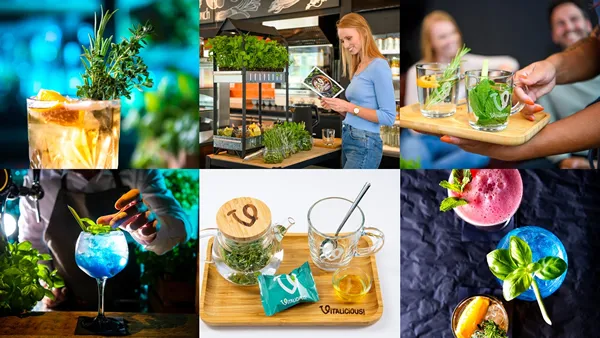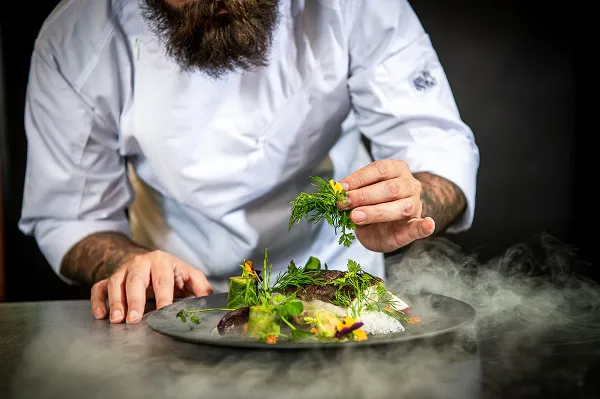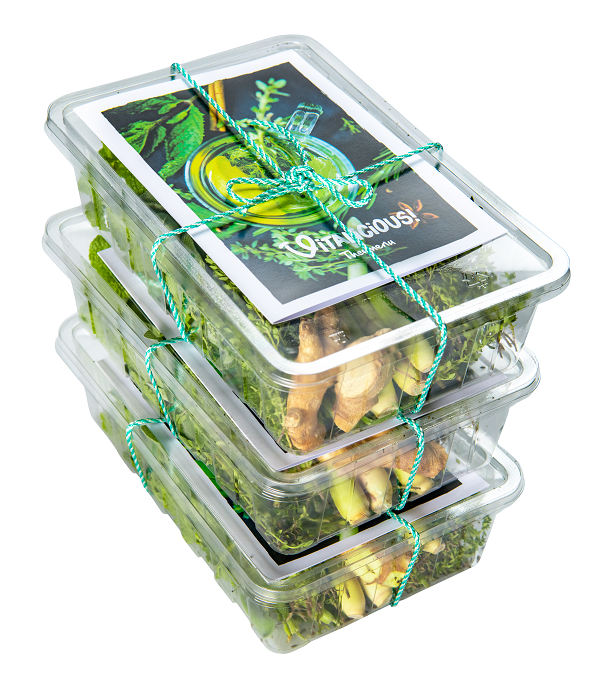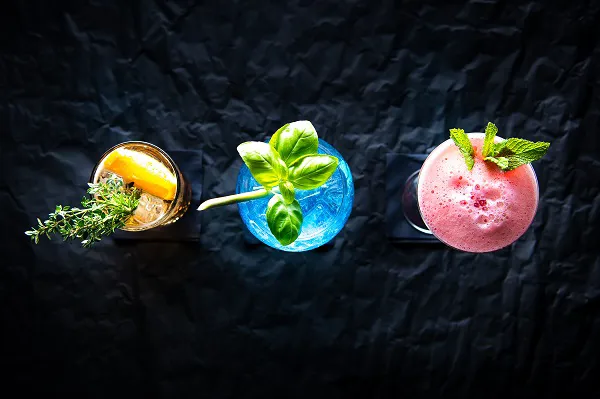Expanding and standing out with fresh herbs: That is what Vitalicious, Vitacress Real's herb brand, aimed at the foodservice sector, focuses on. They use market data to provide customers with targeted advice and inspiration.

Which fresh herbs should chefs use, and how often should they use them? What do they really know about fresh herbs, their uses, and their health benefits? And what barriers do the restaurant industry face regarding the increased use of fresh herbs? These are all things Vitalicious, a Dutch company, wanted to know. So, they partnered with market researcher, Marketing4Results, and did a quantitative survey among chefs to gain more insight into this target group's use and knowledge of herbs.
Vitacress Real has traditionally focused on retail (consumers). "We're great at advising customers on how to increase their herb category. With Vitalicious, we're extending that to the professional target group: wholesale, hospitality, and catering, so even more people can get to enjoy the real taste of fresh herbs," says Renée Peeters, marketing manager at Vitacress Real.
How do you assist chefs with herbs? Vitalicious was launched during the pandemic. "Not an easy time to introduce a new label, but it gave us the space to connect with this normally very busy target group. Vitalicious's positioning is founded on interaction with that group. Nearly 100 decision-makers in the hospitality segment took part in the survey, including restaurant owners, buyers, and, of course, chefs."
Vitalicious was launched during the pandemic. "Not an easy time to introduce a new label, but it gave us the space to connect with this normally very busy target group. Vitalicious's positioning is founded on interaction with that group. Nearly 100 decision-makers in the hospitality segment took part in the survey, including restaurant owners, buyers, and, of course, chefs."
"Questions included how often and what fresh herbs are used for, knowledge about fresh herbs, its uses, and general health benefits. Also, why do chefs choose fresh herbs, and what hampers its use? The results are incredibly useful. This data provides insight into the need and the underutilized potential of fresh herbs in the hospitality industry. We also know how we can help chefs to start using more fresh herbs in the kitchen," Renée says.
Inspiration box to promote the use of fresh herbs
The survey showed that, among other things, most chefs like working with fresh herbs. Though, its shorter shelf life, compared to the dried variety, prevent them from doing so. All the more reason for the herb brand to take a closer look at how it offers its products. "Perhaps different portions or packaging could work better." Limited knowledge and lack of inspiration were frequently mentioned as barriers to using fresh herbs.

"These are things we can address. Based on these insights, we started working on a Vitalicious inspiration box specifically designed for chefs. We want to build a community among this target group. Chefs don't allow anyone to push them in a certain direction. But we can inspire them so that they can, in turn, inspire each other. The box contains different herbs and an inspirational booklet with recipe suggestions, facts, and tips for use," Renée continues.
It also seems inspiration is mostly still gained via wholesalers. That is why Vitalicious plans to join forces with hospitality industry suppliers, such as Sligro and Makro. They want to organize events and assist clients even better when it comes to know-how and inspiration using, for example, magazines, store shelves, and the herb packaging itself.
Herbs as a salt substitute
It also appears that 75% of the respondents want to know how using fresh herbs can benefit your health. "Most are curious about the healthy uses of herbs. For example, herbs are a good alternative to salt. More than half the target group wants to use less salt in their dishes. Everyone knows too much salt is bad for you. However, what many people don't know is that the flavor of herbs is a good substitute."

Tea concept
"Lavas, for instance, also called the Maggi plant, is truly natural, fresh flavoring. Salicornia is another good alternative. Or what about chives with egg. We're so used to a pinch of salt on an egg, but fresh chives are much healthier and just as tasty. We use Vitalicious to show what alternatives there are and how to apply them," explains Peeters.
Is the fresh herb sector being affected by the ever-increasing labor shortage in the hospitality industry? "Not so far. We tried offering processed ready-to-use cut fresh herbs, but there doesn't seem much need for that. There are staff shortages everywhere, but it hasn't yet affected the use of fresh herbs. The ultimate fresh experience of unprocessed fresh herbs probably plays a role in that."
Surprising tea menu
Vitalicious not only helps clients grow by using fresh herbs, they also offer companies the chance to distinguish themselves. "Now that everything is open again, there's a significant, immediate run on eateries. We notice that in demand too. Besides the usual herbs, there's a growing interest in the more unusual ones. Customers like standing out and want to keep surprising their guests, which is entirely possible with Vitalicious herbs," Renée says.
"For example, we recently renewed our tea concept; herbal tea is a real money-spinner. To make it easier for our buyers, we've developed five flavors: Healing Thyme (with lemon thyme and ginger), Lemon Calm (with lemon balm and mint), Mint to Be (with mint), Rosememory (with rosemary and lemongrass), and Super Sage (with sage and lemon thyme). These delicious, healthy herbal blends are presented along with a tea menu, which includes a list of all the health benefits."

How nice would it be if restaurants were to offer a menu of specialty teas alongside the specialty beers one? And, of course, fresh herbs are also an excellent, profitable addition to cocktails and mocktails. Also new is an Asian herb line, which is still in development. "Asian cuisine is still very much on the rise," the marketing manager declares. "We want to help foodservice by creating tasty combinations of certain Asian dishes and herbs. We want to assist them in choosing fresh herbs for this."
Renée says the fact that Vitalicious works in a data-driven manner is quite unusual. "Especially in the fresh herb sector. We use the research results to develop market-driven concepts, so we can advise our customers as best we can. And it's a guideline for creating content for our social media channels. There, too, is much to be gained know-how and inspiration-wise," she concludes. The Vitalicious brand has been rolled out in the Netherlands, Belgium, and Germany. (CH)
Renee Peeters
Vitacress Real
Faunalaan 50
5928 RZ Venlo
Mob +31 6 1103 5245
[email protected]
www.vitalicious.eu
